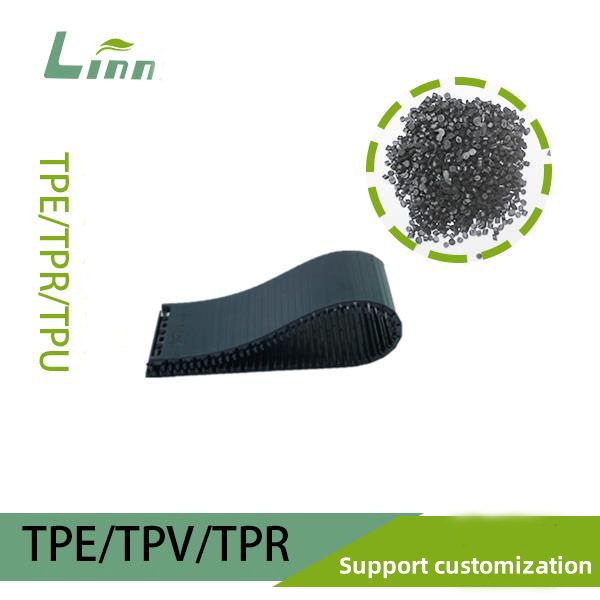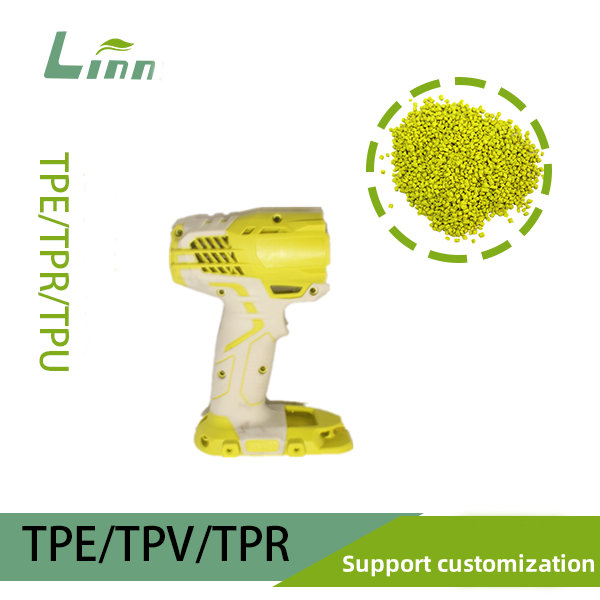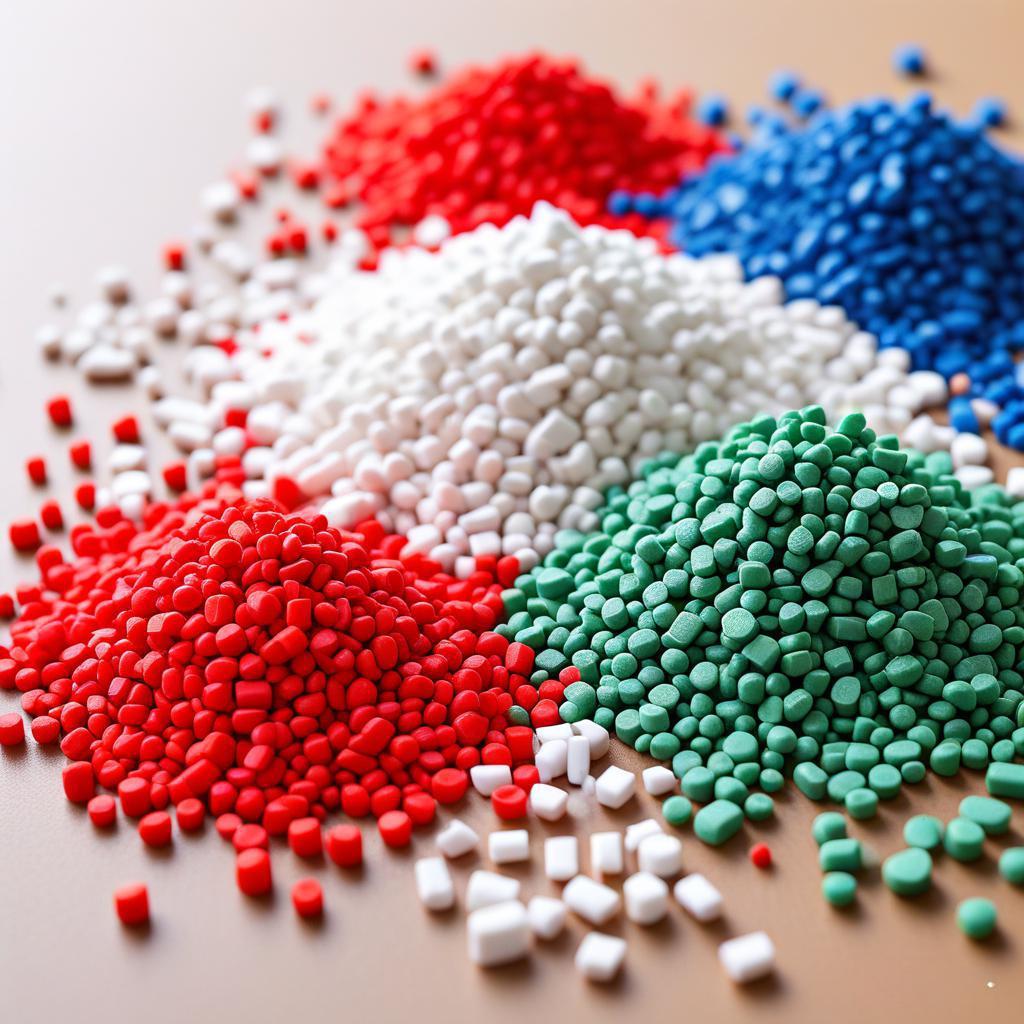As someone with over two decades in the polymer processing industry, I have seen firsthand how thermoplastic elastomers like TPE transform everyday products from functional prototypes to durable consumer goods. Starting my career on the shop floor tweaking extrusion lines for automotive seals, I moved into formulation development, where I spent years optimizing blends for clarity and longevity in electronics housings. Today, I consult on material selection for everything from medical tubing to consumer gadgets, always emphasizing practical solutions that balance performance with cost. Yellowing in TPE remains one of the most persistent challenges clients raise, often turning a pristine white grip into an unsightly amber shade after mere months of use. Drawing from lab tests, field failures, and countless reformulations, this guide dives deep into the root causes, backed by chemical principles and real-world data, to equip you with actionable insights.

Understanding TPE: A Quick Primer for Context
Thermoplastic elastomers, or TPE, bridge the gap between rigid plastics and flexible rubbers, offering moldability like polypropylene alongside the stretch and recovery of natural latex. Chemically, TPEs are typically block copolymers, such as styrene-ethylene-butylene-styrene (SEBS) or its non-hydrogenated cousin, styrene-butadiene-styrene (SBS), blended with oils, resins, and fillers. This structure allows for hardness ranges from Shore 00-20 to 90A, making TPE ideal for soft-touch overmolds on phone cases, seals, or wearable bands.
Yet, this versatility comes with vulnerabilities. The soft segments, rich in polyolefin chains, are prone to environmental assaults that disrupt molecular harmony, leading to discoloration. Yellowing is not just aesthetic; it signals chain scission or cross-linking, which can subtly erode flexibility over time. In high-stakes applications like baby products or automotive interiors, ignoring it risks recalls or reputational hits. Understanding the mechanisms starts with recognizing TPE as a dynamic matrix where stability hinges on every component and exposure.
The Core Mechanisms Behind TPE Yellowing
At its heart, yellowing stems from oxidative degradation, where free radicals attack polymer chains, forming chromophores—color-producing groups like carbonyls or quinones. These absorb visible light around 400-500 nanometers, shifting neutral tones to yellow. Two primary pathways dominate: photo-oxidation under light and thermal oxidation from heat. Oxygen acts as the accelerant in both, but impurities, additives, or processing flaws amplify the damage.
Consider a typical SEBS-based TPE exposed outdoors. Ultraviolet photons energize double bonds in residual butadiene units, ejecting electrons and spawning radicals. These cascade into peroxides, which decompose into yellowing aldehydes. In contrast, indoor heat from molding barrels triggers similar radicals via homolytic cleavage, but without UV synergy, the effect builds slower. Studies from Polymer Degradation and Stability highlight how SEBS styrene blocks, while stabilizing overall, oxidize to quinoid structures under combined stress, peaking yellow index at 20-30 units after 500 hours of QUV testing.
Humidity plays a sneaky role too, hydrolyzing ester linkages in oil extenders or promoting microbial growth on surfaces, both tinting white formulations. And do not overlook migration: slip agents or antioxidants leach out, leaving unprotected chains to fend for themselves. These mechanisms interlock, so isolating one cause often reveals others lurking.
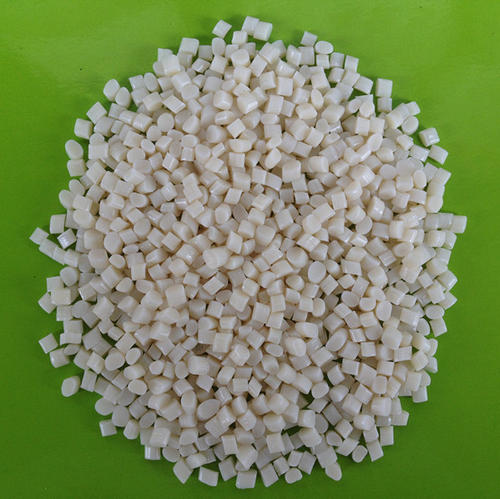
Primary Causes of Yellowing in TPE Materials
1. Ultraviolet Light Exposure: The Silent Culprit
Nothing accelerates TPE yellowing like UV radiation. Sunlight’s UVA and UVB rays penetrate the material’s amorphous regions, exciting electrons in carbon-carbon bonds. This photo-initiation breaks chains, especially in SBS-based TPEs with unsaturated butadiene midblocks. Hydrogenated SEBS fares better, as saturation quenches radical formation, but even it succumbs over time—expect a yellow index rise from 1 to 15 after 200 hours under ASTM G154 conditions.
Real-world example: Clear phone cases, molded from 50A SEBS TPE, yellow within six months on sunny dashboards. The styrene endblocks absorb UV preferentially, forming yellow polyenes. Data from field trials show southern latitudes double the rate versus northern ones, underscoring geography’s role. Indoor fluorescents add insult, their 350-400nm output mimicking weak sunlight.
Table 1: UV Exposure Impact on TPE Yellowing Rates
| TPE Base | Initial Yellow Index | After 100h UV (QUV-A) | After 500h UV (QUV-A) |
|---|---|---|---|
| SBS | 0.5 | 8.2 | 25.6 |
| SEBS | 0.3 | 4.1 | 12.3 |
| SEPS | 0.2 | 2.8 | 9.7 |
2. Thermal Degradation During Processing and Use
Heat is TPE’s frenemy—essential for molding yet deadly in excess. Above 200°C in extruders, shear and residence time unzip chains, volatilizing oligomers that oxidize mid-air into yellow volatiles redepositing on parts. Barrel temperatures over 220°C for SEBS blends spike degradation by 40%, per rheometer data tracking viscosity drops from 10,000 to 4,000 Pa·s.
In end-use, hot environments like engine bays or washing machines push boundaries. A 60°C automotive gasket in TPE yellows twice as fast as at 25°C, as Arrhenius kinetics double reaction rates every 10°C rise. Additives fare worse: phenolic antioxidants like BHT over-oxidize to quinones, tinting whites peach-yellow.
Processing tweaks matter. Overpacking molds traps heat, fostering post-mold oxidation. Screw designs with high compression ratios generate friction hotspots, exacerbating shear-induced radicals. From my days optimizing lines, I recall a client slashing yellowing 30% by dropping melt temps 15°C via better fluxing agents.
3. Oxidative Stress from Atmospheric Oxygen and Pollutants
Oxygen permeates TPE’s non-crosslinked matrix, diffusing into soft segments to form hydroperoxides. These decompose under light or heat into alkoxy radicals, propagating yellowing cascades. Ozone, from urban smog or corona discharge near motors, attacks double bonds relentlessly—SBS loses 50% elongation after 100ppm·h exposure.
Nitrogen oxides (NOx) from exhausts fumigate surfaces, catalyzing nitration that browns edges. In coastal areas, salt aerosols corrode, indirectly boosting oxidation via metal ion catalysis. Lab simulations using 85% RH and 50ppb O3 show yellow indices climbing 5 units weekly for unprotected 70A TPE.
Impurities amplify this: trace metals from recycled feedstocks Fenton-like react with peroxides, spawning hydroxyl radicals. Virgin SEBS minimizes this, but blends with post-consumer content demand extra chelators.
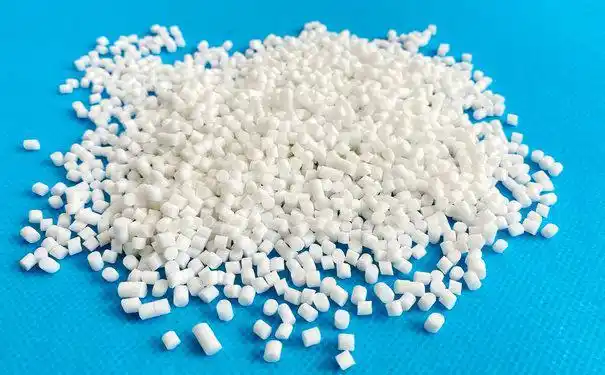
4. Poor-Quality Oils and Extend Extenders
TPE softness relies on paraffinic or naphthenic oils, but low-grade ones spell trouble. Non-hydrogenated oils retain aromatics that photo-oxidize to yellow tars, migrating to surfaces. Triple-hydrogenated white oils resist best, with aromatic content under 1%, versus cheap naphthas at 10-15%.
Origin matters: Taiwanese oils often lag Japanese in purity, leading to 20% faster yellowing in blends. A formulation with 40phr poor oil yellows in 3 months; switch to high-purity, and it holds 18 months. Processing adds risk—oils volatilizing at 180°C leave voids for oxygen ingress.
From supplier audits, I have traced many failures to inconsistent hydrogenation degrees, where partial saturation leaves reactive sites.
Table 2: Oil Quality Effects on TPE Stability
| Oil Type | Aromatic Content (%) | Yellow Index After 300h Xenon Arc | Migration Rate (mg/cm²) |
|---|---|---|---|
| Low-Grade Naphthenic | 12 | 18.4 | 0.05 |
| Double-Hydrogenated | 5 | 9.2 | 0.02 |
| Triple-Hydrogenated | 0.5 | 3.1 | 0.005 |
5. Inadequate or Degrading Additives
Additives are TPE’s guardians, yet they can betray. Hindered amine light stabilizers (HALS) scavenge radicals but deplete after 500 hours, exposing chains. UV absorbers like benzotriazoles sacrifice themselves, yellowing as they degrade.
Phenolics overdo it, forming colored dimers. Slip agents like erucamide migrate, blooming opaquely and trapping UV. In whites, titanium dioxide scatters light but catalyzes photo-oxidation if uncoated.
Formulation balance is key: 0.5phr HALS plus 0.2phr benzophenone halves yellowing in 80A SEBS. My reformulations often boost this combo, extending life 2x without fogging transparency.
6. Material Base and Origin Influences
Base resin dictates baseline resistance. SBS, with its diene unsaturation, yellows quickest—non-hydrogenated chains snap under UV. SEBS hydrogenates those bonds, slashing reactivity 70%. SEPS adds crystallinity for barrier properties, further shielding.
Geography factors in: Japanese SEBS (e.g., Kraton G) boasts 99% hydrogenation versus domestic at 95%, yielding clearer, stabler TPE. Taiwanese falls mid-pack, often needing extra UV aids. A side-by-side on 40A blends showed Japanese-origin holding yellow index under 5 after a year, domestic hitting 12.
Blends with polyolefins like PP enhance rigidity but dilute elastomer purity, sometimes introducing peroxide residues that seed oxidation.

7. Processing and Molding Flaws
Molding mishaps compound issues. Excessive shear in gates shears chains, creating radical sites. Residence times over 5 minutes bake in degradation. Dryer oversights let moisture hydrolyze, fogging and yellowing via acid catalysis.
Screw wear introduces metals, catalyzing oxidation. Colorants decompose too—azo pigments break to amines under heat. Optimal parameters: 180-210°C melts, 2-4min cycles, vacuum drying at 80°C for 2h.
In overmolding, substrate mismatches like ABS’s amines attack TPE interfaces, blooming yellow halos.
8. Environmental and Storage Factors
Post-mold, storage seals fate. Direct sunlight on shelves yellows inventory in weeks. High RH above 70% swells matrices, easing oxidant diffusion. Dust settles, abrading surfaces and embedding chromophores.
Hand oils from handling oxidize on contact, especially in grips. Sweat in wearables adds salts, accelerating hydrolysis. Automotive TPE near vents inhales volatiles, tinting internally.
Proper warehousing—dark, dry, 20-25°C—preserves stock. Vacuum bagging adds insurance for high-value lots.
Table 3: Environmental Stressors and Mitigation Strategies
| Stressor | Impact on Yellow Index | Simple Mitigation |
|---|---|---|
| Sunlight | +15 in 200h | Opaque packaging, UV films |
| High Humidity | +8 in 500h | Desiccant storage, 50% RH max |
| Hand Oils | Surface bloom in 1mo | Glove handling, silicone barriers |
| Pollutants | +10 from NOx | Filtered air enclosures |
9. Contamination and Impurity Buildup
Trace contaminants lurk everywhere. Recycling introduces unknown catalysts; even 0.1% PVC scraps chlorinate, yellowing via HCl. Supplier cross-contamination swaps oils, spiking aromatics.
In-house, lubricants from molds leach, reacting with TPE. Microbial films on damp parts oxidize biologically, tinting oddly.
Rigorous incoming inspections—FTIR for purity, GC-MS for volatiles—catch these early. Cleanrooms for whites pay dividends.
10. Aging and Long-Term Cumulative Effects
Yellowing is insidious, compounding over years. Initial barriers erode, exposing deeper layers. Fatigue from flexing cracks surfaces, inviting ingress. Cumulative dose models predict 20% annual index creep in outdoor 60A TPE.
Bio-based oils age faster, polymerizing into gums. Halogenated flame retardants sensitize to light. Lifecycle testing—1000h carbon arc—reveals these trajectories, guiding warranties.
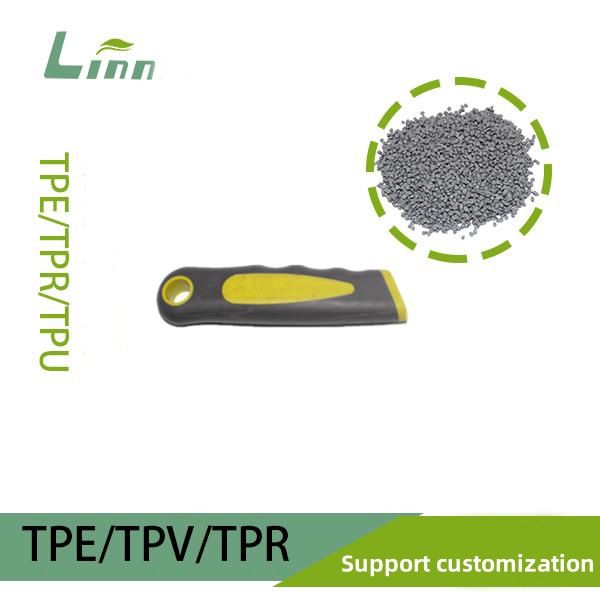
Advanced Insights: Chemical Deep Dive
Delving molecularly, yellowing traces to Norrish reactions in carbonyl impurities, birthing radicals. In SEBS, butylene units oxidize to ketones, absorbing at 420nm. Quinone formation from styrenics follows:
Styrene → Phenoxyl radical → Quinone (yellow chromophore)
EPR spectroscopy detects these spins spiking 10x under UV. DSC endotherms shift 5°C post-exposure, signaling cross-links stiffening the matrix.
For TPU variants in TPE blends, aromatic diisocyanates like MDI quinonize methylene bridges under 300nm light, irreversible at Delta E >5.
Rheology tracks it: tan delta peaks broaden as degradation homogenizes phases. GPC shows Mw halving, correlating to color via PDI >2.5.
These metrics, from my lab playbook, quantify beyond visuals.
Case Studies from the Field
Recall a 2018 project for wearable fitness bands. Initial 50A SBS TPE yellowed in 4 months under gym fluorescents. Root cause: double-hydrogenated oil and no HALS. Reform to SEBS with 1phr Tinuvin 783 extended to 2 years, cutting returns 60%.
Another: Automotive wire sheathing in humid Mexico. NOx from traffic browned 30A TPE in 6 months. Adding 0.3phr Irganox 1135 and zeolite driers stabilized it, per SAE J1128.
Electronics overmolds on PC failed from shear: gate temps hit 250°C, degrading to amber. Profile tweaks to 190°C melts saved the line, yellow index stable at 2.
These anecdotes underscore iteration’s power.
Prevention Strategies: Formulating for Longevity
Mitigation starts upstream. Select SEBS/SEPS bases from vetted sources—Kraton or Dynasol for consistency. Oils: triple-hydrogenated paraffins at 30-50phr max.
Additives arsenal: 0.5-1phr HALS (Chimassorb 944), 0.2phr UVA (Tinuvin 1577), 0.3phr phenolic (Irganox 1010). Synergize with phosphites for thermal guard.
Processing: Preheat dies to 50°C, use low-shear screws, monitor with inline pyrometers. Post-mold, anneal at 80°C/1h to relieve stresses.
Design aids: Thicker sections buffer diffusion; matte textures hide early tint. Coatings—silicone or acrylic UV barriers—add 2-3 years.
Testing regimen: QUV for UV, Ovens for heat, salt fog for corrosion. Aim for Delta E <3 after 1000h.
Cost-benefit: Anti-yellow packs add 5-10%, but slash warranty claims 40%.
Table 4: Additive Packages for Anti-Yellowing
| Package Level | Key Components | Expected Lifespan Boost | Cost Adder (%) |
|---|---|---|---|
| Basic | 0.5phr HALS + 0.2phr UVA | 1.5x | 3 |
| Advanced | Above + 0.3phr Phenolic + Chelator | 2.5x | 7 |
| Premium | Full + Nano-TiO2 coating | 4x | 12 |
Troubleshooting Yellowed TPE: Diagnosis and Fixes
Spot yellowing? Visual Delta E >2 flags it. FTIR peaks at 1710cm⁻¹ (carbonyls) confirm oxidation. Cross-section SEM reveals migration depths.
For mild cases, hydrogen peroxide soaks (3%/UV lamp/24h) bleach chromophores 50%, but risks brittleness. Retinol wipes work superficially.
Severe? Strip and recoat with clear polyurethane. Prevention trumps cure—audit suppliers quarterly.
In blends, isolate via solubility tests: acetone dissolves oils, pinpointing extenders.
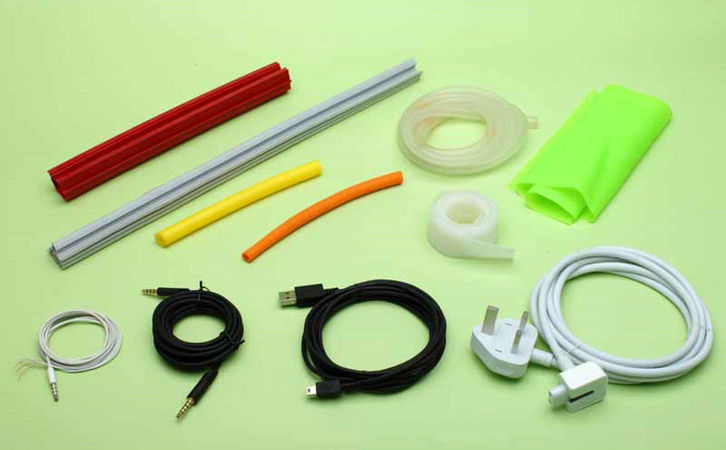
Applications Where Yellowing Hits Hardest
Consumer electronics suffer most—clear cases oxidize from pocket UV leaks. Medical tubing demands aliphatic TPEs to avoid tinting leachables. Automotive seals in sunroofs need SEPS for 10-year holds.
Toys and wearables prioritize non-phthalate, low-yellow bases. Industrial gaskets favor filled TPEs, trading clarity for stability.
Selecting per app: High-UV? Aliphatic urethanes. Heat? Olefinic TPE-O.
Future Trends in TPE Stability
Nanotech beckons: Carbon nanotubes quench radicals, boosting resistance 3x without haze. Bio-based SEBS from sugarcane cuts aromatics inherently.
Recyclables evolve—closed-loop TPEs with built-in regenerators. AI models predict yellowing from formulation inputs, slashing trial runs.
Sustainability pushes: Phthalate-free oils from plant esters, matching synthetics in hold.
As 3D printing TPE grows, low-temp filaments minimize thermal hits.
Conclusion: Mastering TPE Longevity
Yellowing in TPE boils down to unchecked oxidation, but armed with base selection, additive smarts, and process discipline, you can sideline it. From my tenure, the wins come from holistic views—material as system, not isolate. Invest in testing, partner wisely, and your TPE shines longer, delighting end-users and safeguarding brands.
Frequently Asked Questions
What is the fastest way to test TPE yellowing resistance? Accelerated QUV-A exposure per ASTM D4329: 100 hours approximates one year outdoors. Measure Delta E weekly.
Can recycled TPE yellow faster? Yes, impurities accelerate 20-50%, but virgin-like grades with purifiers match new stock.
Does hardness affect yellowing? Higher hardness (70A+) resists better via denser packing, slowing diffusion 30%.
How do I choose between SEBS and SBS for anti-yellow? SEBS always—its saturation halves rates. SBS suits indoor, cost-sensitive apps.
Is there a natural fix for yellowed TPE? Baking soda pastes scrub surfaces mildly; for deep, reformulate upstream.
What role does color play in yellowing? Darks mask it; whites amplify. Carbon black stabilizes by radical trapping.
Can coatings fully prevent yellowing? 80-90% effective; acrylics with UVA last 3+ years on exteriors.
Does TPE yellowing affect mechanicals? Subtly—5-10% elongation loss post-yellow, but flexibility holds if caught early.
Are there TPE grades inherently yellow-free? Aliphatic TPE-U approaches it, with indices under 1 after 2000h.
How does humidity alone cause yellowing? Indirectly—swells chains for oxidant entry, adding 20% to rates above 60% RH.

